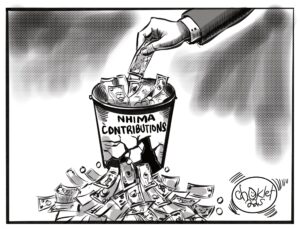Since its inception in 1995, Zambia’s Constituency Development Fund (CDF) has been the flagship of decentralised, inclusive growth- a promise to put real power into the hands of local communities. It was designed with a noble goal: to empower communities and finance local infrastructure, all while narrowing rural- urban development gaps. Three decades on, the CDF has grown significantly, with a substantial budget increase and new legal reforms in 2024 signalling government’s commitment to grassroots empowerment. Yet, its impact remains uneven, hindered by persistent challenges. While many factors contribute to its struggles, this opinion piece focuses on the fundamental weaknesses in legal, policy, and governance frameworks that are holding the CDF back.
The heart of the problem lies in the CDF’s fragmented governance structure. On one hand, you have the 2024 CDF Act, and on the other, a patchwork of guidelines, circulars, and policy documents. This dual system is riddled with institutional ambiguities, fragmented mandates, and procedural inconsistencies that erode the very principles of transparency and accountability the Fund is meant to promote.
The Law’s Critical Gaps
The 2024 CDF Act marked progress by consolidating institutional arrangements and embedding the Fund in Zambia’s decentralisation agenda under Article 257 of the Constitution. Nonetheless, the law itself leaves too much room for interpretation. It fails to clearly define the roles of Members of Parliament (MPs), Ward Development Committees (WDCs), and local authorities. This creates overlapping responsibilities and allows MPs to maintain significant influence over CDF Committees, blurring the line between political representation and administrative decision-making. This lack of clarity opens the door to politicisation and undermines true community autonomy.
Furthermore, the act’s enforcement provisions are weak. While Section 31 of the CDF Act makes misappropriation of funds an offence punishable under the Public Finance Management Act of 2018, it offers no CDF-specific investigative procedures or penalties. The Public Finance Management Act is designed for centralised enforcement and does not address constituency-level risks such as pollical interference or elite capture. This leaves a critical accountability gap in the very law meant to safeguard community-driven development.
A Disjointed Policy Framework
The policy framework guiding the CDF fares no better. While the Fund is governed by a range of instruments, including the CDF Guidelines, the Eighth National Development Plan (8NDP), the Decentralisation Policy, these instruments lack integration into a coherent, multi-sectoral system. There is no single, unified CDF policy that connects financing, planning, and monitoring functions with national development priorities. This leads to fragmented implementation and inconsistent standards across constituencies.
For example, although the Planning and Budgeting Act requires local planning to align with Integrated Development Plans (IDPs), the CDF Guidelines rely instead on Ward Development Plans (WDPs) for project identification, with no mandatory link to constituency or district plans. This disconnect undermines strategic alignment with national goals such as rural industrialisation and job creation.
Inclusivity also remains a challenge. While 20% of the Fund is earmarked for youth, women, and community empowerment, there are no binding quotas or disaggregated targets to ensure these groups benefit equitably. Persons with disabilities remain sidelined in both the consultation processes and project access.
Additionally, transparency and citizen engagement are treated as optional rather than essential. The Guidelines do not mandate regular public consultations, require documentation of community input, or ensure public disclosure of budgets and project lists. There is also no functional grievance redress mechanism at constituency level for citizens to voice concerns.
Finally, the CDF lacks a structured inter-ministerial policy coordination mechanism. Despite the Fund touching on various sectors- from education, youth empowerment, gender, and infrastructure- the Guidelines are primarily developed primarily by the Ministry of Local Government with minimal formal input from other key ministries. This siloing leaves the Fund’s strategy incomplete. The lack of clear policy on how to deploy 5% disaster contingency fund during floods or droughts is another glaring example of this policy gap, leaving communities vulnerable when they need help most.
These legal and policy deficits collectively compromise Zambia’s decentralisation agenda. Instead of building trust in local governance, the CDF risks reinforcing perceptions of political patronage and poor service delivery. As the Fund’s allocations continue to grow, it is imperative that its governance structures evolve as well.
Look out for the next Monday Opinion, where we will explore practical and actionable reforms to strengthen the CDF and restore its promise.
About the Author:
Lucy P. Musonda is an Advocate of the High Court of Zambia (AHCZ). She currently serves as a Legal Researcher at the Centre for Trade Policy and Development. She holds an LLB from the University of Zambia and is currently pursuing an MBA at Heriot-Watt University, Edinburgh Business School, as well as a Master of Laws (LLM) in Taxation and Investment Law at ZCAS University.
























